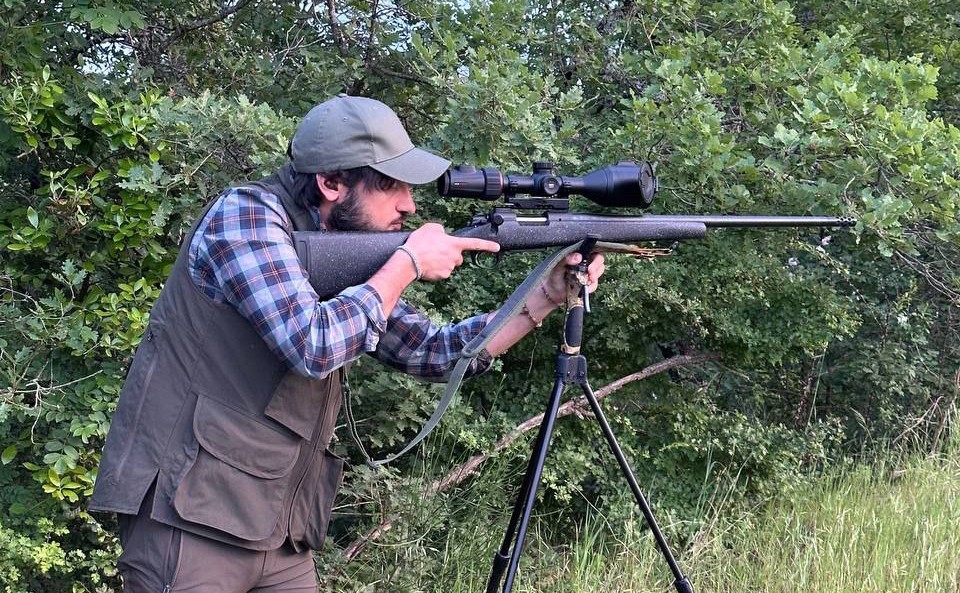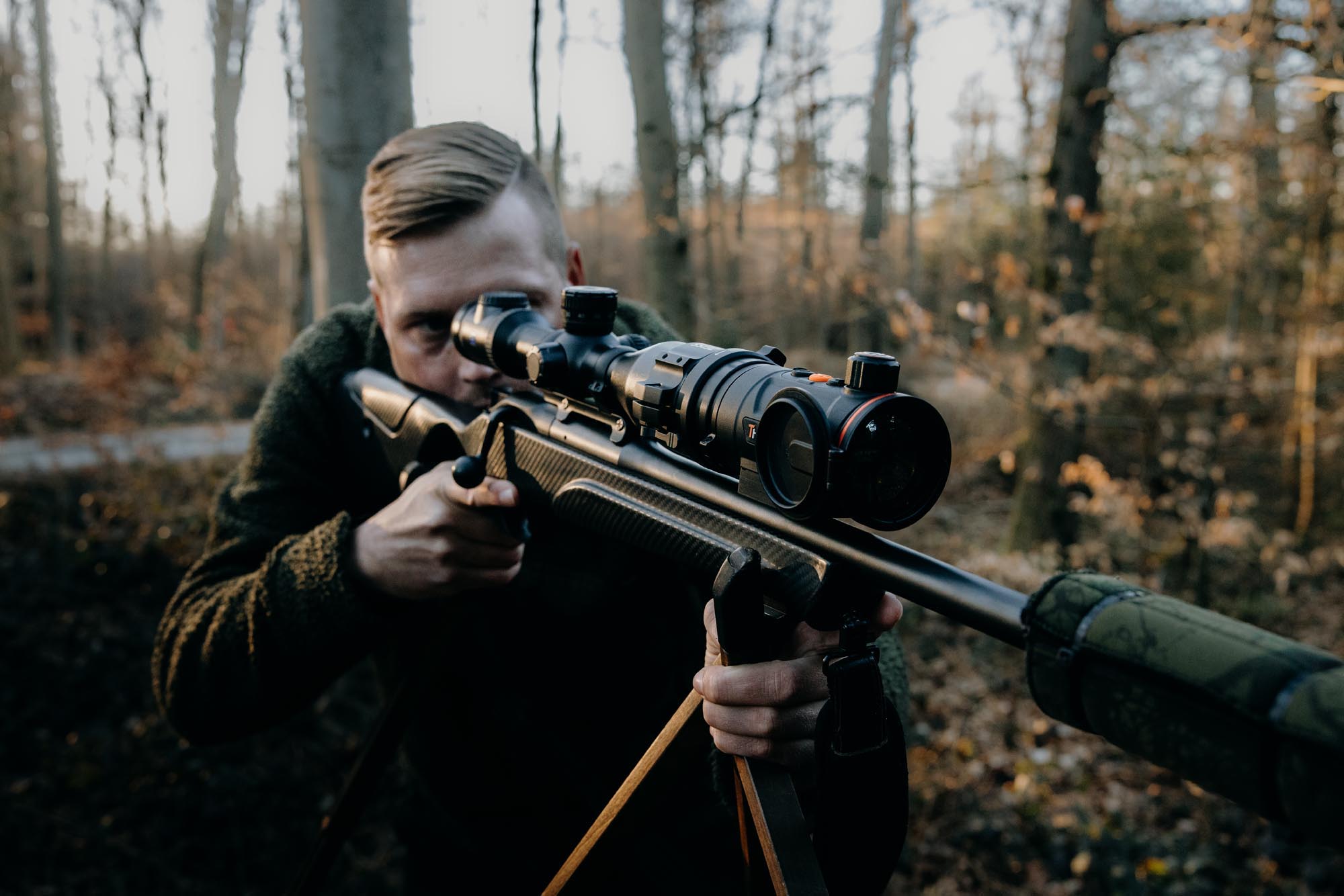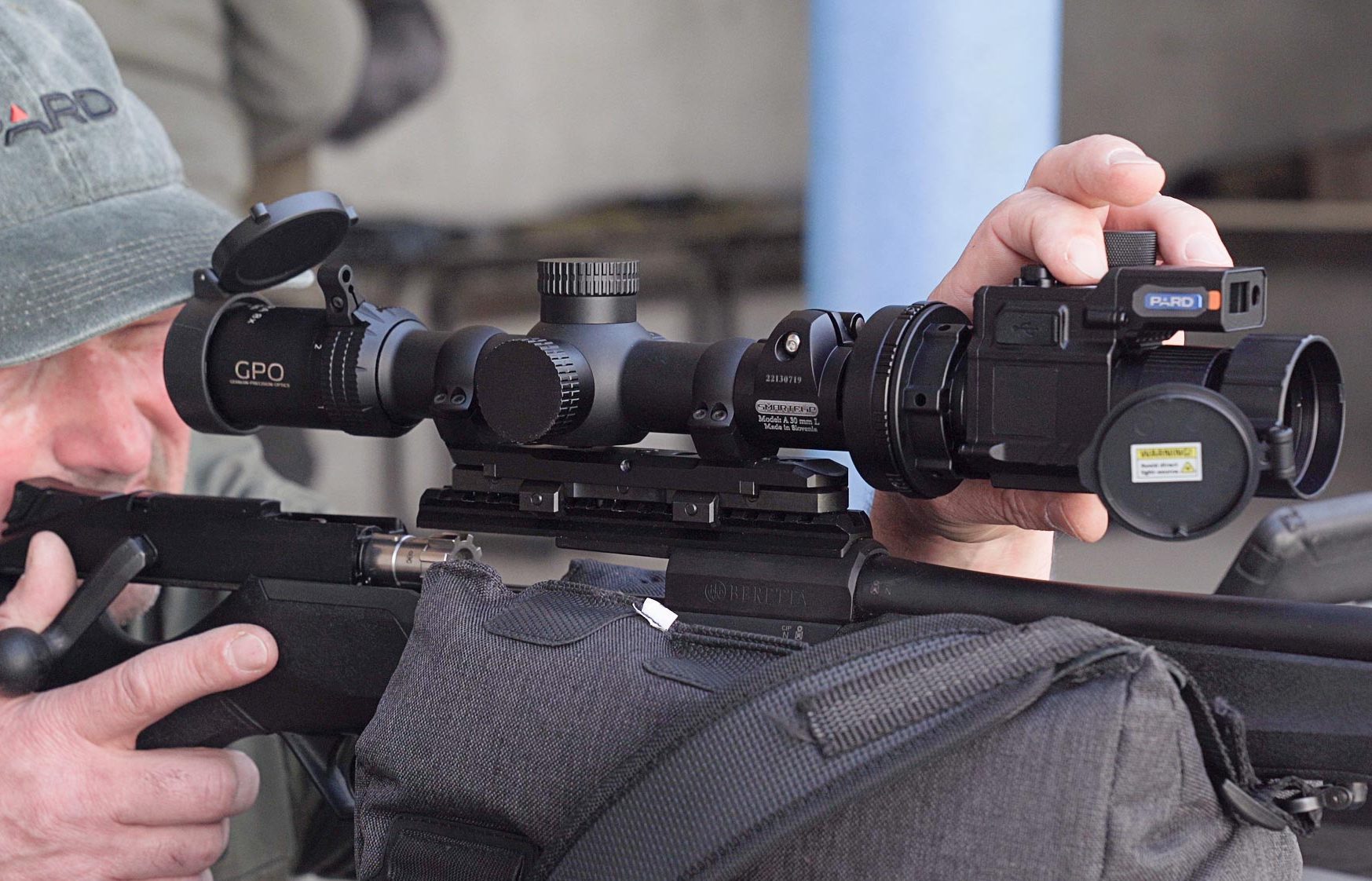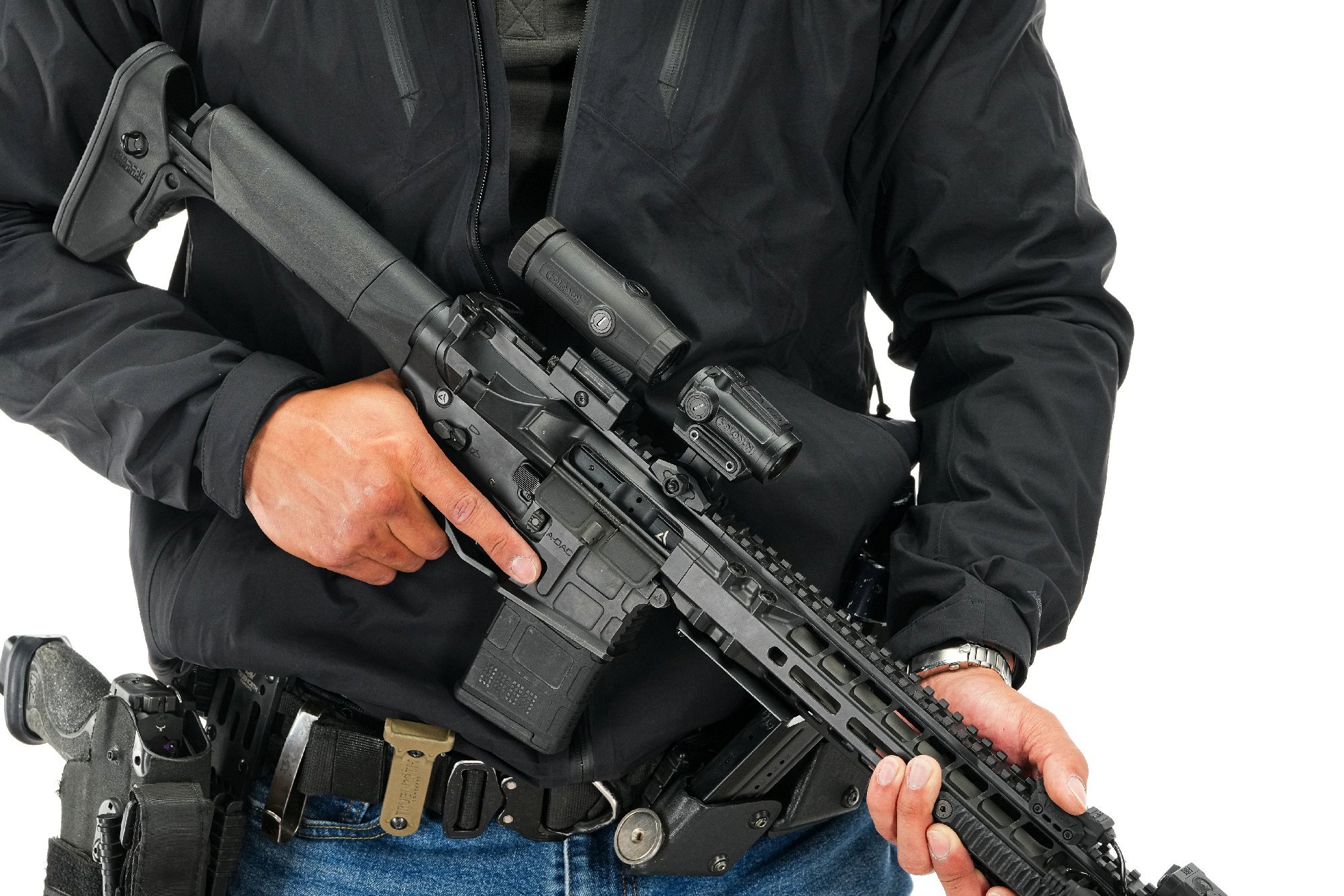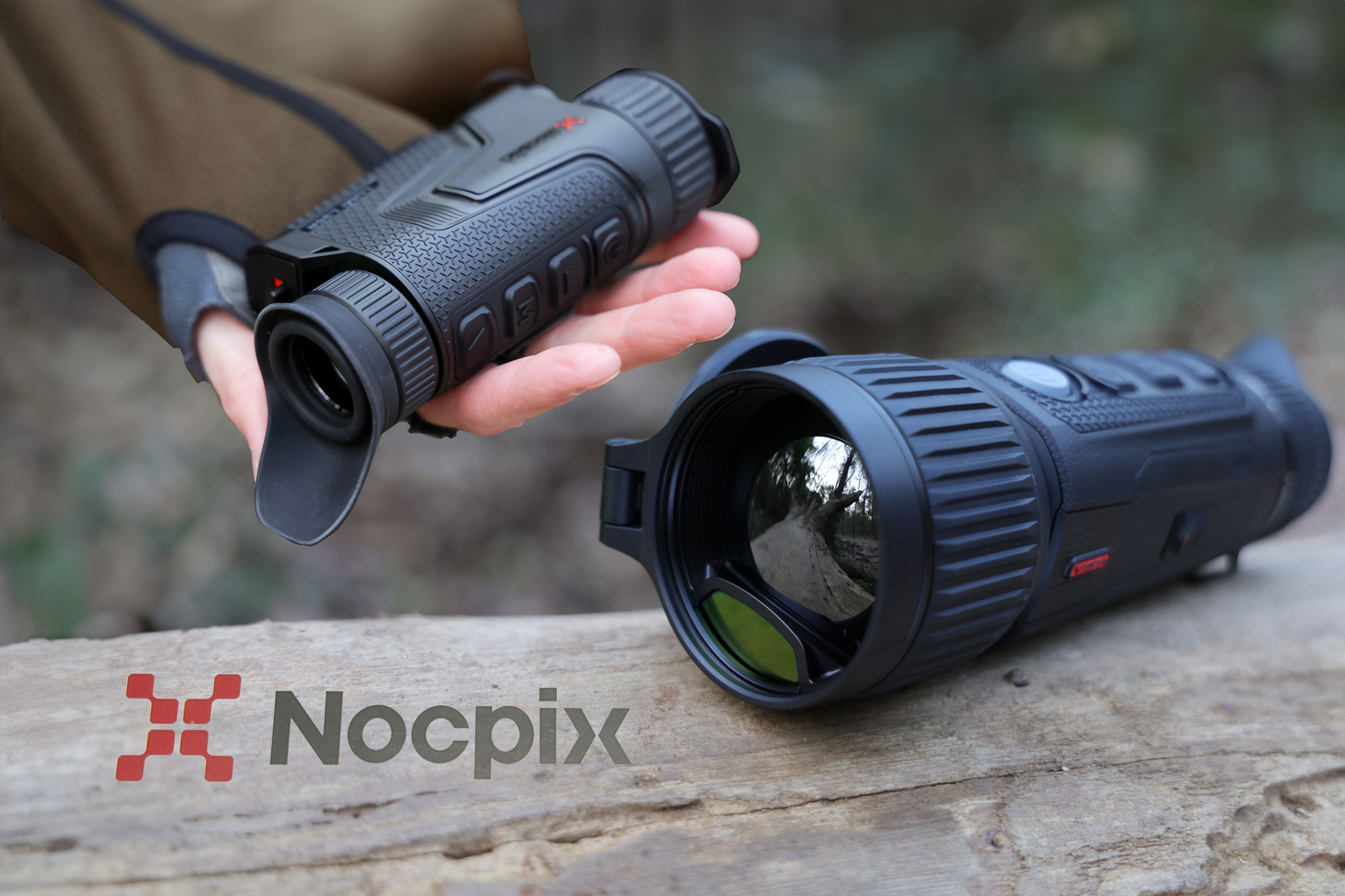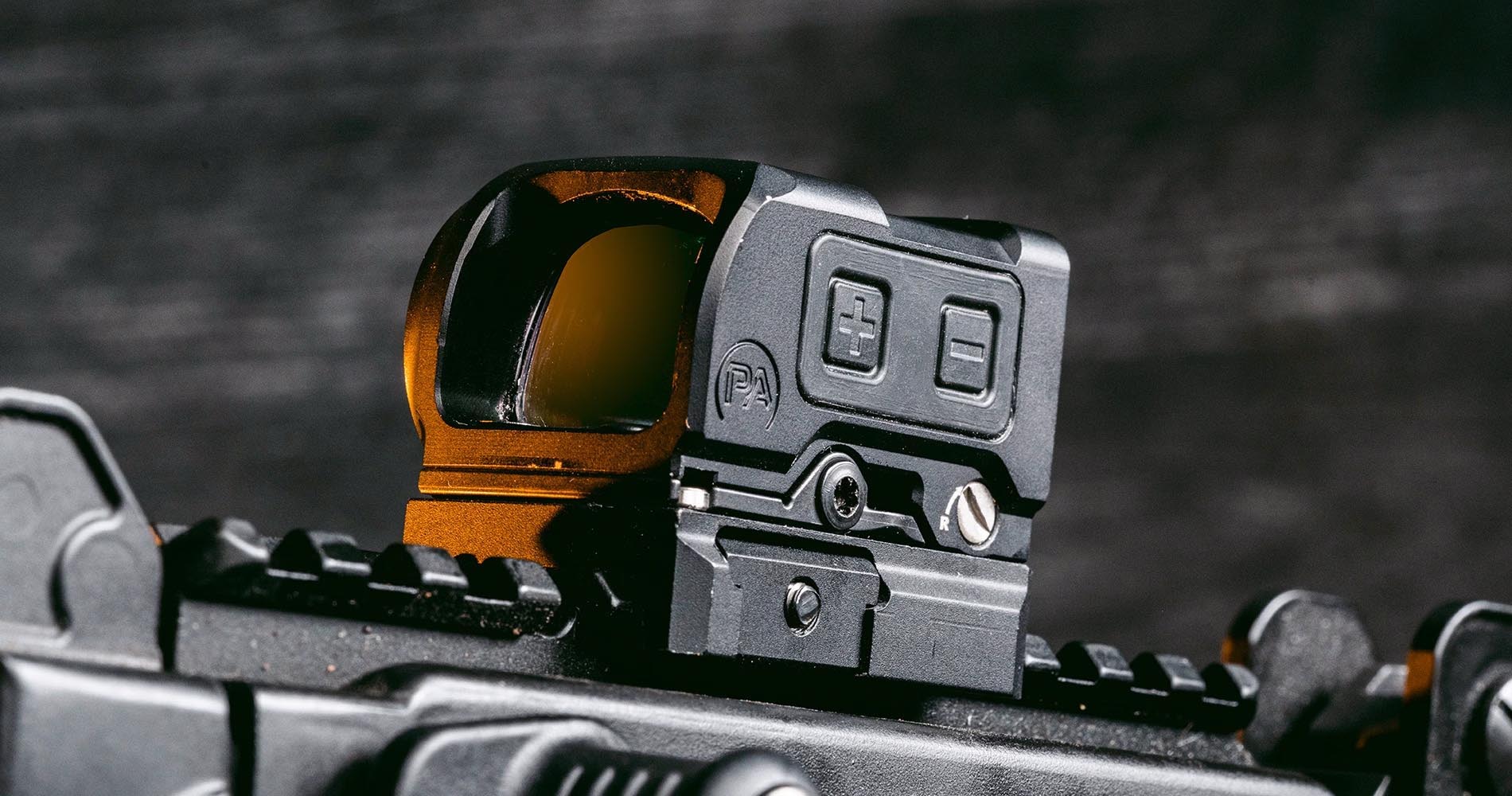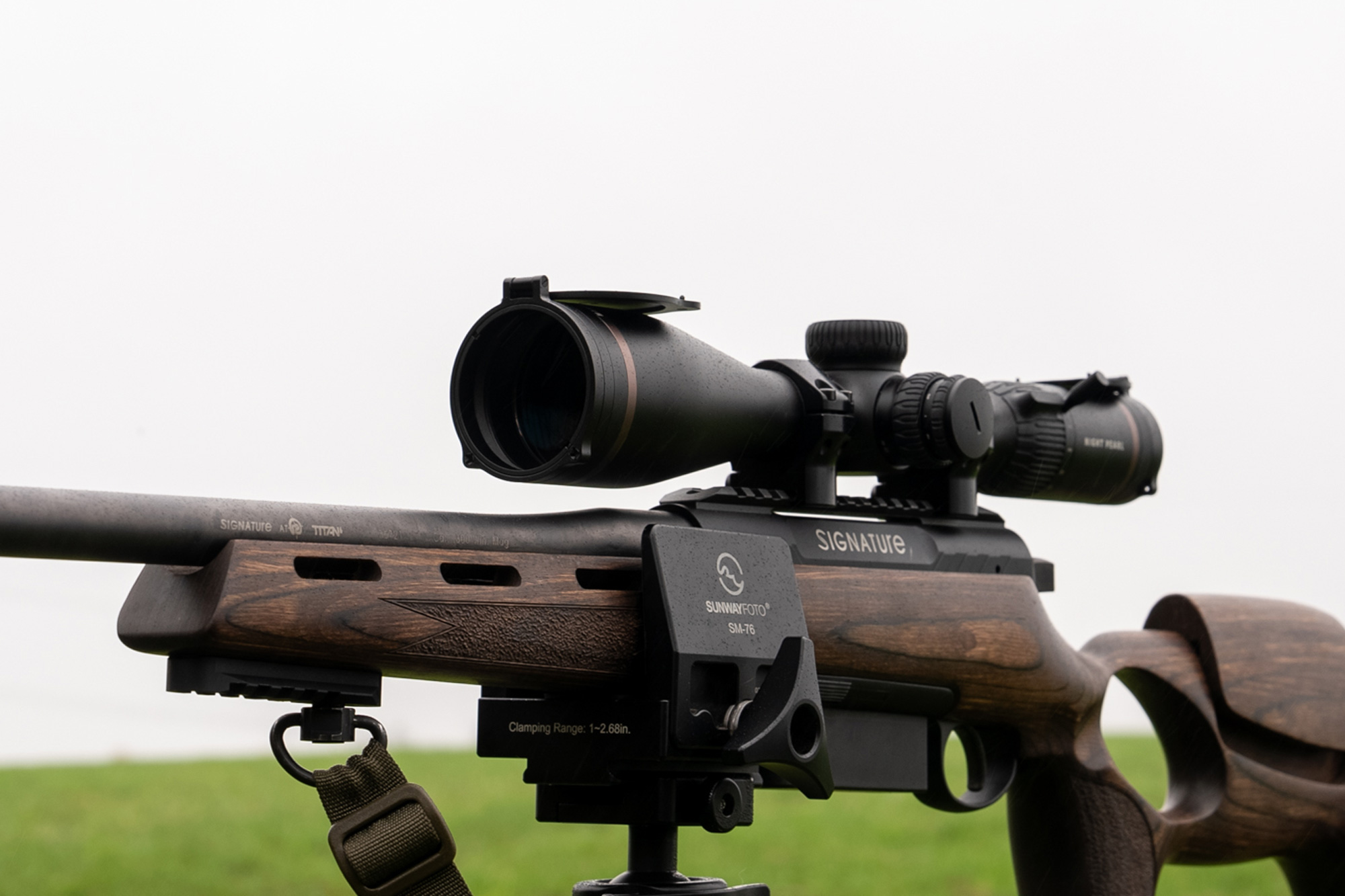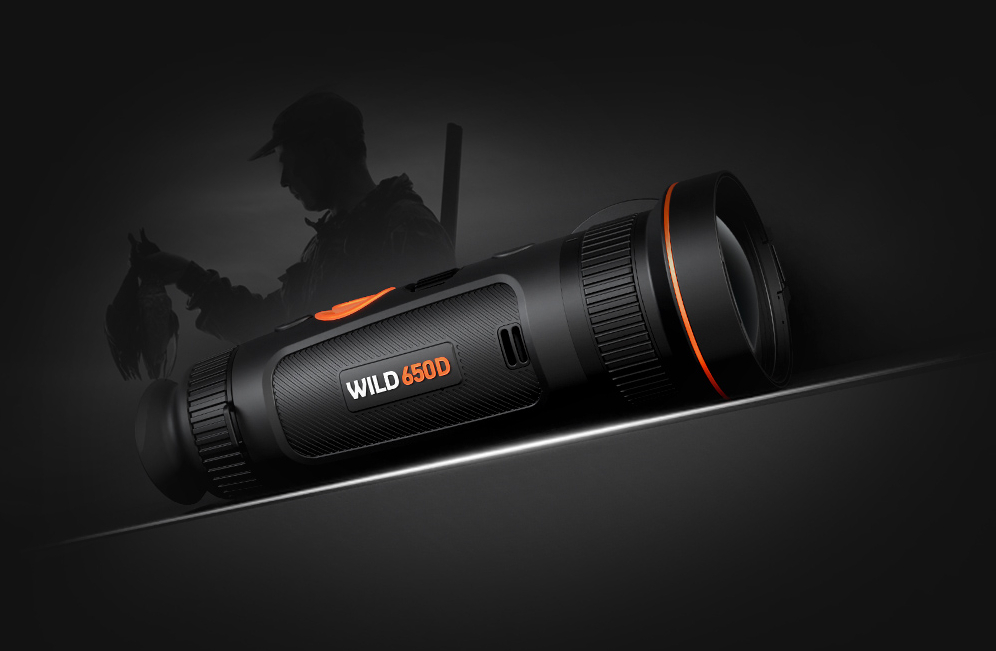Parallax is the apparent change in position of an object when the observer changes his own position by his own movements. Easy, comprehensible example: we look over our thumb at a light switch on the wall. Then we move our head sideways and see that the position of the switch obviously changes. If we now move closer to the switch and touch it with our thumb, the position of the thumb opposite the switch remains the same, no matter how the head is moved.
Parallax and riflescope: what exactly are they about?
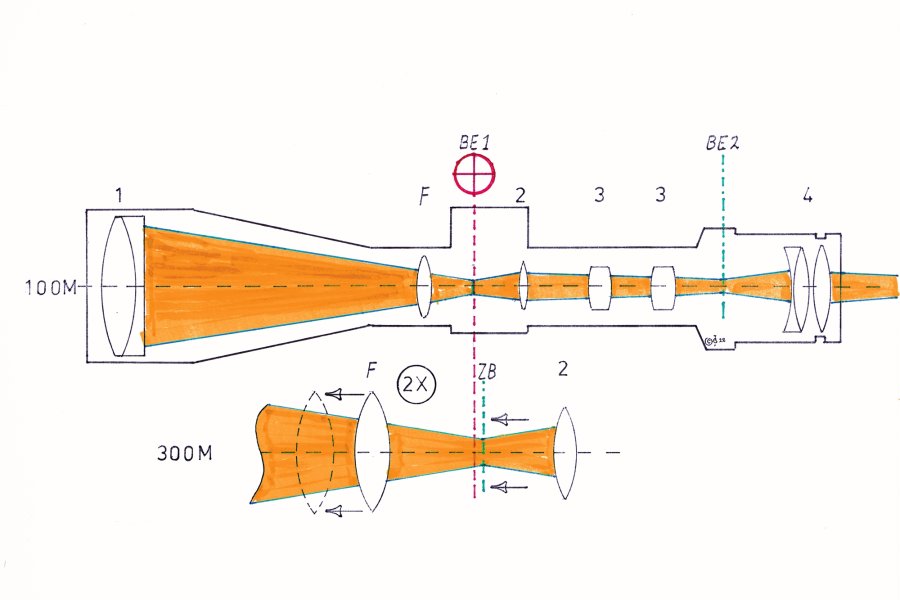
Parallax is an aiming error that occurs when the intermediate image is not in the same image plane as the reticle but in front of or behind it. If you look through the scope at an angle, the aiming error occurs because from this eye position the intermediate image is on a different optical axis than the reticle. If one looks centrally through the scope then the intermediate image is on the same axis as the reticle and there is no parallax error. However, the image is not sharp because the intermediate image is not in the same plane as the reticle.
We rarely find parallax compensation in 10x or 12x magnification riflescopes. Is such a riflescope then parallax-free?
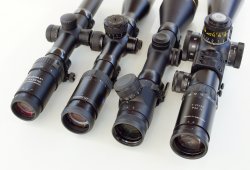
In principle, yes, but only at the distance to which the manufacturer has set the optics to be parallax-free – which is usually 100 meters. In the graphic, this situation is shown in the upper sketch. The focusing lens, however, is not part of the standard scope. It is normally only used when the scope is equipped with a "side focus" (in older scopes it would be placed on the objective bell). We have drawn it in our example – picture above – to explain the function of the parallax compensation. We mounted the reticle in the first image plane (red dashed line). The diopter compensation is adjusted so that the reticle is in focus. Here the scope is set parallax free. The intermediate image falls exactly on the same plane, the first image plane. We see the target and reticle in focus. The riflescope is actually parallax-free at this distance (100 meters). This means that – even when looking through the scope at a slight angle – there is no deviation with respect to the aiming point. At all other distances, near or far, the system is not parallax-free without parallax compensation, nor is it properly focused. The sporting shooter and the hunter who can't avoid the long distance and wants at least 15x magnification needs parallax compensation because with the higher magnification the target image is less sharp. It is out of focus, so to speak. Parallax compensation not only avoids parallax errors but also always presents a sharp image. Consequently, this means that if the parallax compensation is set so that the target image is sharp, then the riflescope is also set parallax-free at this distance.
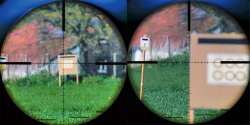
The reticle is mounted in the first image plane. We could also have taken the second image plane, this is basically irrelevant for the parallax compensation. At the distance of 100 m, both the intermediate image and the reticle coincide. As a result, the reticle and the intermediate image are in one image plane and the target is seen sharply. The scope is now parallax-free at this distance. In the graphic above, the section showing the focusing lens and the first image plane is magnified twice. The red dashed line of the upper sketch is drawn through here as a reference of the first image plane. The target is now at a distance of 300 meters, which means that the intermediate image is not shown in the position of the first image plane, but somewhat further in the direction of the eyepiece (green dashed line). If the shooter looks at an angle through the scope, then a parallax error occurs because there are now two intersection points along the tube axis. When looking through the scope at an angle, there will be different optical axes as a result. The red and green dashed lines intersect the tube axis at two different points. As a result, the optimum sharpness is also not available. If the focusing lens (F) is now adjusted forward by means of the adjustment mechanism of the parallax compensation (see arrows in the direction of the dashed lens), the intermediate image (green dashed line) shifts so that it is again in the same plane as the reticle (red dashed line). Result: no parallax error and a sharp image.
Our 4 test riflescopes from Meopta, Leupold, Schmidt & Bender and Zeiss: what about the parallax error here?
At low magnifications up to 12x, one hardly notices the less sharp image quality and the parallax error is present, but less dramatic from a hunting point of view than is often believed. Parallax error depends on the selected distance and the design of the scope.
We used four riflescopes for our test. Meopta Meostar R1 1-4x22 RD, Leupold VX-3 3.5-10x50, Schmidt & Bender PM II 5-25x56 and Zeiss HT 1.5-6x42. Two riflescopes have special features. The Leupold, which just like the Zeiss and Meopta is set parallax-free from the factory, has a parallax-free setting at 150 yards (137 meters) unlike the other manufacturers. This makes it somewhat more suitable for longer ranges. The Schmidt & Bender PMII is the only scope in our series to feature parallax compensation with an additional adjustment turret. This was ideal, because it allowed us to set this riflescope exactly to 100 m for comparison purposes and photograph the results with higher magnification. For the test, we mounted the scopes on a heavy tripod and determined at 25, 50, and 200 meters how much the maximum deviation of the hold point on the target was when looking through the scope at an angle. Depending on the manufacturer, the deviations ranged from 10 to 20 mm – measured from the center point when looking centrally through the scope, compared to the maximum oblique view. The distance to the target plays the biggest role when the scope is set parallax-free at a certain distance (usually 100 meters). But also the construction of the scope and the chosen magnification bring a small variance, which we listed in a table. We state that the differences of the point of aim caused by the parallax error on the target turn out to be small. Only the Zeiss HT danced a bit out of line at 1.5x magnification. Although this scope has top-notch light transmission and provides a very sharp, high-contrast image, the parallax error at this magnification is worse than the other scopes used here. At the 6x magnification, everything was then again at its finest.
Looking through the scope in hunting and sports – Typical aiming errors
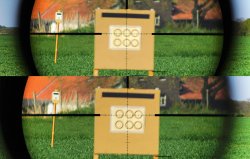
The fact is that the deviations of 10 to 20 millimeters are so small that they are lost in the accuracy that is common in hunting practice and need not be considered further. With the keyword practice should be considered that looking at an angle through the scope at a distance of 200 meters and more is rather rare. At these distances, one takes more time to aim and looks centrally through the glass. However, in dynamic hunting, things are different. In this case, the target is acquired as quickly as possible and small aiming errors (parallax) are expected due to the speed. Because the target is much closer, however, 2 to 3 cm aiming errors do not play a major role. Misses are more likely to occur as a result of hesitation or due to an incorrect assessment of the speed of the game. Basically, a lot is due to lack of training. Thus, even for the sport shooter, parallax error is really only an issue at close range in a dynamic shooting competition. If it is a matter of medium or even long ranges, then with increasing magnification, parallax will play a modest role as a target error, because the shooter is looking centrally through the scope. However, because of the unadjusted focus, the fact remains that the image does not reach the eye in sharp focus. For this reason, from 15x magnification and up, a riflescope is usually always equipped with parallax compensation.
The photos clearly show that the target is out of focus at both 50 and 200 meters. Our eye can correct somewhat in terms of sharpness, but if the distance increases and you cannot do without a large magnification, then a riflescope that is set parallax-free at a certain distance is not enough. A mechanical parallax compensation as an additional control of the optic design is then necessary. Even if you manage to perfectly align your eye through the riflescope coaxially, and there is therefore no parallax error, you are confronted with the fact that the intermediate image is not in the same image plane as the reticle. The consequence? Either you see the reticle sharp and the target image blurred, or you can possibly adjust the scope via the diopter eyepiece setting so that the target image appears approximately sharp, but then at the expense of the sharpness of the reticle.
Parallax test at a glance: riflescopes from Meopta, Zeiss, Leupold and Schmidt & Bender
| Distance
in meters: | ||||||
| Scope | Model | *1 | *2 | 25 | 50 | 200 |
| Meopta | R1 | 1-4x22 | 1x | 15 | 20 | |
| Meopta | R1 | 1-4x22 | 4x | 10 | 10 | 20 |
| Zeiss | HT | 1.5-6x42 | 1,5x | 15 | 30 | |
| Zeiss | HT | 1.5-6x42 | 6x | 10 | 10 | 20 |
| Leupold | VX3 | 3 3.5-10x50 | 3.5x | 10 | 10 | |
| Leupold | VX3 | 3 3.5-10x50 | 10x | 10 | 10 | 20 |
| Schmidt & Bender | PMI | 5-25x56 | 5x | 13 | 15 | |
| Schmidt & Bender | PMI | 5-25x56 | 25x | 13 | 15 | 20 |
Notes: Data of parallax at 25, 50 and 200 meters in millimeters. *1. magnification and objective lens diameter. *2. selected magnification during the test. | ||||||
Our conclusion on the four scopes in terms of parallax errors
With scopes that are factory set to be parallax free at a certain distance, parallax error will occur if you look through the scope at an angle and shoot at a different distance than the one for which the scope was set to be parallax free. Fortunately, the deviations are not large, making parallax error unlikely to be the cause of a miss at common hunting distances. On the other hand, the performance potential of modern guns, calibers and cartridges has developed so rapidly that relatively small targets can be hit even at longer ranges. Then one appreciates a scope with high magnification where focus can be achieved. At magnifications of 15x and above, however, there is no way around a well-functioning parallax compensation for the sport shooter.



